How To Escape From The Bean Giant Handcuff
Description
This section is from the book "Secrets Of The Great Mysteries", by Oudini. Also available from Amazon: Secrets Of The Great Mysteries.
How To Escape From The Bean Giant Handcuff
The Bean Giant handcuffs, so called from the inventor, Captain Bean, are known all over this country to the police and handcuff kings as the hardest cuff to escape from if placed on with the hands behind the back and the keyhole toward the body, as shown in Fig 5.
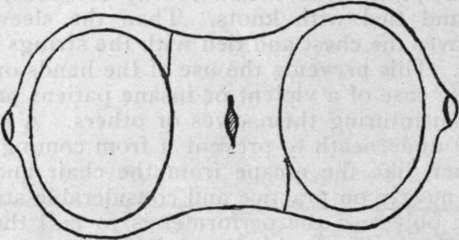
Fig. 1.
Fig. 1 shows the appearance of the Bean handcuff. Fig. 2 is the original key that comes with the cuff. Fig. 3 shows what is known as the Bean Giant reach key. Fig. 4 is the pick, which is made from a buttonhook, straightened out, and which will open the cuff a good deal quicker than the key itself.

Fig. 2.
Fig. 5 shows the performer placed in one pair of Bean Giant handcuffs with the hands behind the back and the keyhole toward the body; a most difficult position to escape from.
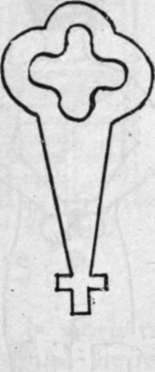
Fig. 3.
Fig. 6 shows the chair to be used, which has the appearance of an ordinary chair, but which has been prepared as shown in Fig. 8, and is used in the position shown in Fig. 7. Fig. 8 is an enlarged view of the end of the leg which has been prepared. It has a saw cut as shown, but which is so small that it would not be noticed in an ordinary examination, and even if noticed its use would not be guessed.

Fig. 4.
The performer enters the cabinet and turns the chair on its back as shown in Fig. 7, bringing the leg with the saw cut up and forward. He now bends to his knees beside the chair with his face towards the chair back, and brings his hands in contact with the end of the chair leg, having first placed in the saw cut the pick or key where it is firmly held. The pick is preferable to the key in this case, as the key will sometimes break under the severe test. The cuffs, being thus placed in contact with the pick or key, when the correct position has been taken it will enter the keyhole and the lock will be sprung open, allowing one side of the cuff to be removed. After this the other side may be removed more easily, completing the act.
It must be understood that this trick is not so easy to learn or to execute as might be supposed by reading this description. The author spent many weeks of practice before finding the best position for holding the hands and body.

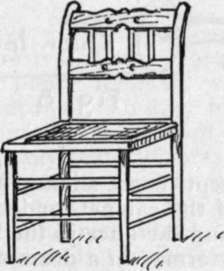
Fig. 6.
If only a running suit is worn the key may be concealed by being tied around the leg, or it may be kept in the cabinet, or placed under the sole of the foot with glue.
After removing the cuffs, the key is taken from the chair leg and concealed, the chair is set in position again, and the performer shows the open handcuffs to the audience or challenger.
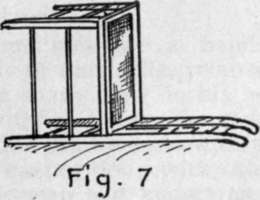
Up to the present time the author, Oudini, has been the only man possessing the secret of this escape, and to the best of his knowledge and belief it has been unsuccessfully tried by any other man in the business. He is still open to challenge in regard to it.
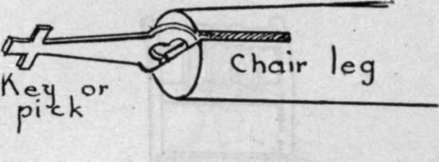
Fig. 8.
The chair is kept from sliding by being placed against the side of the cabinet, and is further held, if necessary, by placing the knee in the lower part.
If this act is performed in a dress suit, as is usually done, the pick or key is concealed about the clothing.
Continue to:
